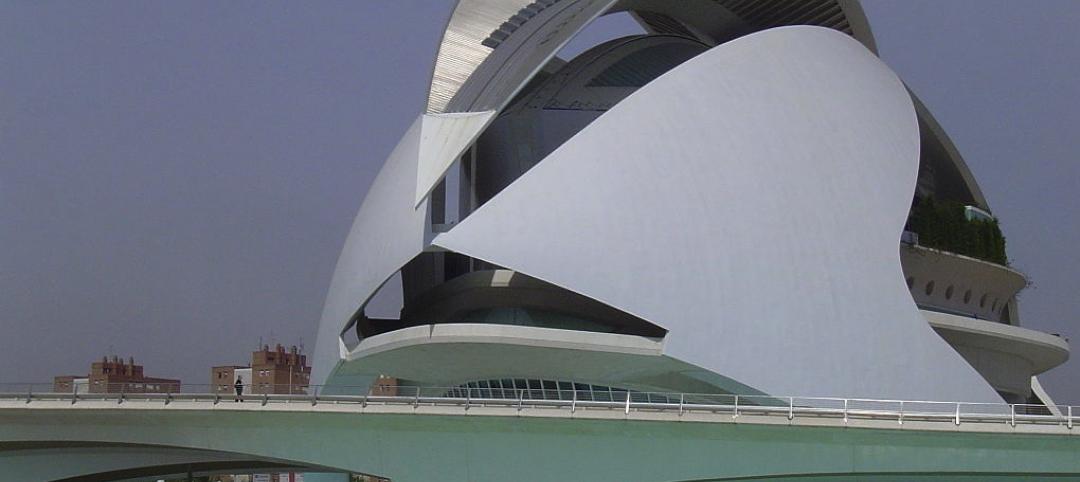Phoenix-based architecture firm Jones Studio will design the Water Education Center for Central Arizona Project (CAP)—a 336-mile aqueduct system that delivers Colorado River water to almost 6 million people, more than 80% of the state’s population.
The Center will allow the public to explore CAP’s history, operations, and impact on Arizona. With safe, up-close views of the canal, the space aims to enable a larger audience to understand CAP and how it fits into Arizona’s history. The Water Education Center also will host gatherings such as large water-stakeholder meetings, elected official briefings, and school field trips.
The Colorado River Basin is experiencing the effects of a decades-long drought and climate change, and Arizona has been experiencing a Colorado River shortage since 2021. Located at CAP’s headquarters, the new 8,000-sf, net-zero water facility emphasizes climate resilience and features onsite stormwater harvesting and passive rainwater harvesting from the building. The architecture and landscape will be used as pedagogical tools to illustrate innovative water conservation and reuse strategies.
“With this new Water Education Center, we endeavor to create an extremely energy- and resource-efficient building that embodies and expresses sustainable technologies,” Brian Farling, principal of Jones Studio, said in a statement.
Design ideas include a weathered steel cylinder embedded in the earth that acts as a sculptural catch basin for stormwater. In the entry plaza, a diagram of the Colorado River watershed, highlighting the CAP canals and prominent rivers, will educate visitors about the water system’s footprint.
Flexible multipurpose spaces and educational exhibit spaces will open to an outdoor gathering space that bridges the canal. A 27,000-sf canopy will protect visitors from the desert sun and collect rainwater for reuse. Traditional passive design strategies, such as thermal mass and self-shading, will be supplemented by a 6,000-sf photovoltaic array.
On the Building Team:
Owner: Central Arizona Project (CAP)
Design architect and architect of record: Jones Studio
Mechanical and plumbing engineer: Associated Mechanical Engineers
Electrical engineer: Woodward Engineering
Structural engineer: Rudow + Berry






Related Stories
| May 30, 2014
Riding high: L.A., Chicago working on their version of the High Line elevated park
Cities around the U.S. are taking notice of New York's highly popular High Line elevated park system. Both Chicago and Los Angeles are currently working on High Line-like projects.
| May 29, 2014
7 cost-effective ways to make U.S. infrastructure more resilient
Moving critical elements to higher ground and designing for longer lifespans are just some of the ways cities and governments can make infrastructure more resilient to natural disasters and climate change, writes Richard Cavallaro, President of Skanska USA Civil.
| May 23, 2014
Big design, small package: AIA Chicago names 2014 Small Project Awards winners
Winning projects include an events center for Mies van der Rohe's landmark Farnsworth House and a new boathouse along the Chicago river.
| May 23, 2014
Top interior design trends: Gensler, HOK, FXFOWLE, Mancini Duffy weigh in
Tech-friendly furniture, “live walls,” sit-stand desks, and circadian lighting are among the emerging trends identified by leading interior designers.
| May 22, 2014
No time for a trip to Dubai? Team BlackSheep's drone flyover gives a bird's eye view [video]
Team BlackSheep—devotees of filmmaking with drones—has posted a fun video that takes viewers high over the city for spectacular vistas of a modern architectural showcase.
| May 22, 2014
IKEA to convert original store into company museum
Due to open next year, the museum is expected to attract 200,000 people annually to rural Älmhult, Sweden, home of the first ever IKEA store.
| May 21, 2014
Gehry unveils plan for renovation, expansion of Philadelphia Museum of Art [slideshow]
Gehry's final design reorganizes and expands the building, adding more than 169,000 sf of space, much of it below the iconic structure.
| May 20, 2014
Kinetic Architecture: New book explores innovations in active façades
The book, co-authored by Arup's Russell Fortmeyer, illustrates the various ways architects, consultants, and engineers approach energy and comfort by manipulating air, water, and light through the layers of passive and active building envelope systems.
| May 19, 2014
What can architects learn from nature’s 3.8 billion years of experience?
In a new report, HOK and Biomimicry 3.8 partnered to study how lessons from the temperate broadleaf forest biome, which houses many of the world’s largest population centers, can inform the design of the built environment.
| May 19, 2014
Calatrava wins court case concerning 'Calatrava bleeds you dry' website
A judge has ordered the left-wing political party Esquerra Unida to pay €30,000 to Santiago Calatrava because of "insulting and degrading" website.
















